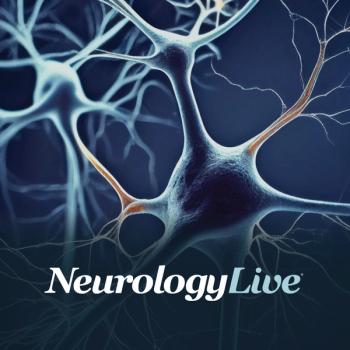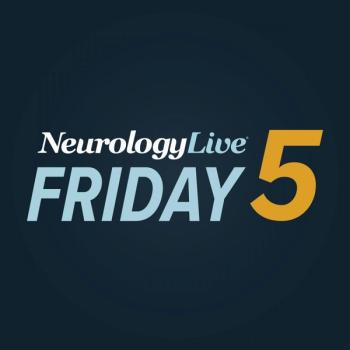
Newborn Screening, Enzyme Delivery, and the Future of Pompe Disease Treatment
Priya Kishnani, MD, division chief of Medical Genetics at Duke University, reflects on Pompe disease’s historical and scientific evolution, from early enzyme therapy to next-generation treatment strategies and newborn screening breakthroughs.
Pompe disease, also known as glycogen storage disease type II (GSD II), is a genetic disorder caused by a deficiency of the acid alpha-glucosidase (GAA) enzyme, due to recessive mutations in the GAA gene, which leads to the accumulation of lysosomal glycogen, affecting the skeletal and cardiac muscle tissue. The disease, which impacts around 1 in 40,000 people worldwide, is typically managed through enzyme replacement therapy (ERT), in addition to supportive and symptomatic care.
At the
Kishnani, a professor of pediatrics and division chief of Medical Genetics at Duke University, sat down with NeurologyLive® to discuss her presentation and the evolving treatment landscape of Pompe disease. She detailed key advances in understanding the disease’s mechanisms, including its systemic effects on autophagy and mitochondrial function, and emphasizes lessons learned from ERT, including targeting limitations and immunogenicity challenges. Kishnani also outlines the field’s forward momentum toward combination strategies, immune tolerance approaches, and gene-based therapies.
NeurologyLive: Why was this a topic of interest for you?
Priya Kishnani, MD: This topic was especially meaningful to me because this year marks the 75th anniversary of the Muscular Dystrophy Association (MDA)—and Pompe disease was the first neuromuscular condition to receive FDA-approved treatment.
It felt like the perfect moment to reflect on the historic journey from "then to now." We began with no enzyme therapy, relying on natural history studies to understand the disease. Then came the first-generation enzyme replacement therapy (ERT), intravenous alglucosidase alfa, much of which was pioneered at Duke. Today, we’ve reached a point where we have two next-generation approved therapies: alglucosidase alfa and cipaglucosidase alfa combined with miglustat.
What’s also transformative is the rise of newborn screening, which has opened up a whole new frontier. Before 2006, we had only natural history data. Since 2015, with 46 states now screening, we’re not only identifying infants with classic infantile-onset Pompe, but also catching those with late-onset Pompe who may already show features that warrant early intervention—be it physical therapy or even ERT. That early identification is crucial, and it’s a major theme I wanted to highlight.
How has our understanding of Pompe disease mechanisms evolved since the pre-ERT era?
Mechanistically, we’ve always known that Pompe is a lysosomal storage disorder characterized by glycogen accumulation due to deficiency of the GAA enzyme. But today, our understanding has grown deeper. We now recognize that the downstream effects go far beyond storage: there’s defective autophagy, mitochondrial dysfunction, and broader dysregulation across the glycogen synthesis and breakdown pathways. The GAA enzyme doesn’t operate in isolation—it’s interrelated with other enzymes in these pathways.
We’ve entered an era where we're viewing this through a systems biology lens—thinking in terms of transcriptomics, metabolomics, and glycogen pathway “omics.” It’s more than just one enzyme or one defect. We’re also starting to ask more nuanced questions: Why are certain muscle fiber types more affected? Why do they respond differently to treatment? These are important considerations that reflect how far we’ve come in mechanistic understanding.
What are some of the most critical lessons from the current ERT landscape in Pompe disease? What have we learned so far?
That’s a great question—and it depends on whether we’re talking about the pre-2021 landscape with only alglucosidase alfa, or the post-2021 landscape with next-gen ERTs.
The first-generation therapy was lifesaving for infantile Pompe and significantly beneficial for late-onset patients. But we also learned its limitations:
- Less than 1% of the enzyme actually reaches skeletal muscle.
- It’s highly dependent on mannose-6-phosphate (M6P) for cellular uptake.
The newer enzymes are designed with enhanced M6P content, allowing more efficient delivery to skeletal muscle. But we still face a “sink effect” where much of the enzyme gets taken up by the liver and other organs before reaching its target. Another critical lesson is around immunogenicity. If antibodies form and neutralize the enzyme or block its uptake, the benefit is severely reduced. That’s why immune tolerance induction strategies have become so important in managing Pompe.
We’re also starting to borrow lessons from oncology: combining modalities to maximize effect. So now we’re exploring substrate reduction therapies, chaperone therapies, and treatments that might even cross the blood-brain barrier. And of course, gene therapy and gene editing are major areas of focus. But to truly move forward, we need to stay rooted in a deep understanding of disease biology—and newborn screening has greatly helped us gather that data.
Are there any specific limitations of current ERTs that ongoing research is actively trying to address?
Absolutely. First and foremost is targeting the right tissues. We’re doing better with striated skeletal muscle, but smooth muscle remains a challenge, and crossing the blood-brain barrier is still not possible with these therapies.
On the immune side, it’s not just about IgG titers, which can block the enzyme or reduce its activity. We also see infusion-associated reactions, which in rare cases can be life-threatening. We’re learning more from immunology about the underlying mechanisms—whether reactions are IgE-mediated, related to complement activation, or involve T-cell responses to the therapeutic protein.
So, we need to think holistically—not just about the therapy itself, but how to optimize its benefit and mitigate side effects. That means continuing to build on our scientific understanding across immunology, genetics, and muscle biology. This is the future we’re heading into—and it’s incredibly promising.
Newsletter
Keep your finger on the pulse of neurology—subscribe to NeurologyLive for expert interviews, new data, and breakthrough treatment updates.


































